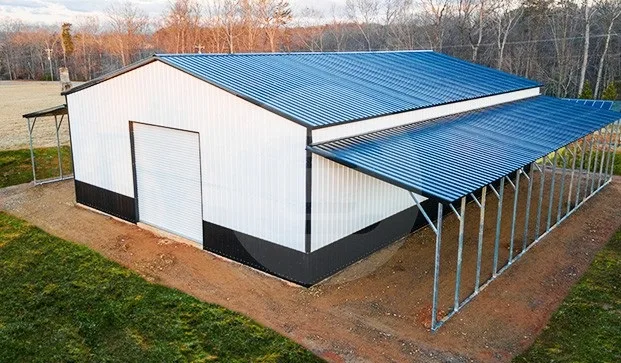Metal barns, with their robust construction and longevity, have long been associated with farming and agricultural storage. However, the adaptability of these structures has led to an expansion in their utility, making them versatile assets in the modern world. From workshops to event spaces, let’s delve into the myriad ways metal barns are being repurposed today.
The Traditional Role: Agriculture and Livestock
Historically, the primary function of metal barns revolved around farming. Their sturdy nature made them ideal for housing livestock, storing feed, and protecting agricultural equipment from the elements. With the advancement in insulation technologies, they became even more optimized for maintaining a stable environment, essential for both crops and animals. But as the world changed, so did the utility of these barns.
Workshops and Studios
Artists, craftsmen, and hobbyists have recognized the potential of metal barns as expansive spaces for creation. The high ceilings are perfect for large installations or projects, while the durable metal structure means heavy machinery and tools can be housed without compromising the building’s integrity. The wide spaces can be partitioned into smaller areas or left open, allowing for flexibility based on the project’s requirements.
Event and Recreational Spaces
One of the more surprising shifts in metal barn utility has been their conversion into event spaces. Their rustic appeal, paired with the ample space they provide, makes them an ideal venue for events like weddings, parties, or corporate retreats. Some barn owners have even transformed these spaces into recreational arenas, from indoor basketball courts to dance studios.
Data-Driven Demand for Multi-Functional Metal Barns
| Purpose | Percentage Increase in Demand (Last 5 years) |
| Art Studios | 45% |
| Recreational Facilities | 60% |
| Event Spaces | 70% |
| Workshops and Craft Areas | 55% |
The table underscores the rising demand for multi-functional uses of metal barns. As traditional farming practices evolve, there’s a clear trend towards diversifying the purposes of these structures.
Sustainable Living and Eco-Homes
Eco-conscious individuals and families are also tapping into the potential of metal barns, converting them into sustainable living spaces. Equipped with solar panels, rainwater harvesting systems, and thermal insulation, these barn homes offer a blend of rustic charm and modern amenities. Their spacious interiors can be transformed into open-concept living spaces, complete with all the comforts of a traditional home.
Storage and Warehousing
Beyond the more creative uses, businesses, particularly e-commerce ventures, have begun using metal barns as storage units or warehouses. Their spacious interiors, paired with the ability to maintain controlled environments, make them perfect for storing products, especially those sensitive to temperature fluctuations.
To sum up, the metal barn, once a symbol of traditional farming, has evolved into a multi-functional structure that caters to a variety of modern needs. Whether it’s hosting a wedding, housing an artist’s studio, or serving as a sustainable home, the adaptability of these structures showcases their enduring relevance in a rapidly changing world.


